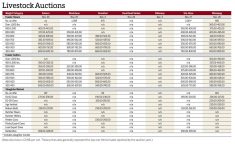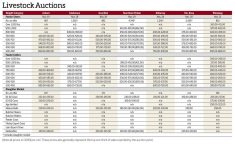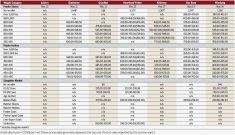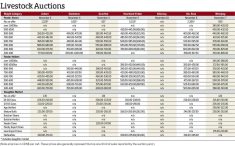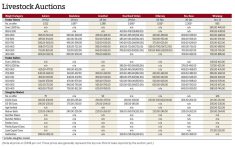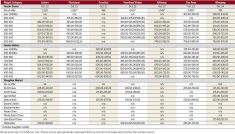Feeder cattle moving through Manitoba’s auction marts saw good demand and solid prices in mid-January as activity picked up following the holiday season.
“It’s very positive,” said Allan Munroe of Killarney Auction Mart, which held its first sale of 2023 on Jan. 16 with just over 1,000 head on offer. He noted there were 600-weight feeder steers nearing $300 per hundredweight in some cases.
Good-quality steers under 600 lb. were fetching $300 or more around the province, with heifers in the same weight class hitting the $240-$250 area and higher bids noted as well.
Read Also
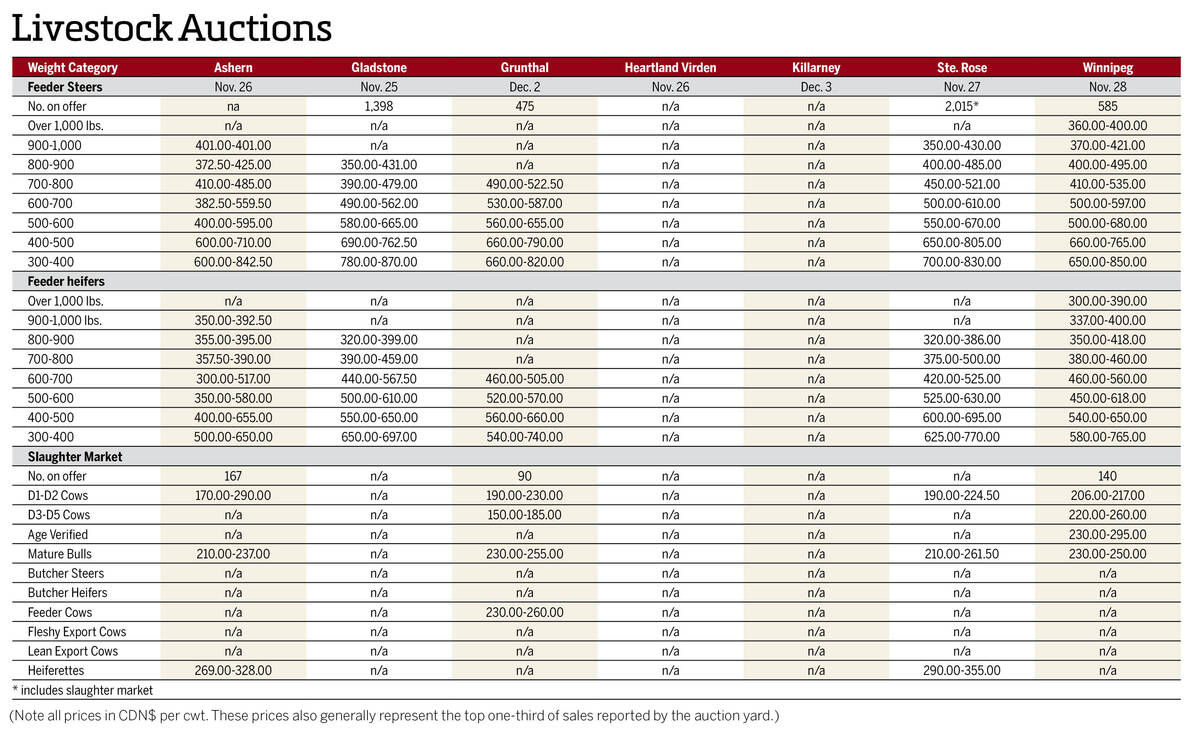
Manitoba cattle prices, Dec. 3
Cattle prices from Manitoba’s major livestock auction marts during the week Nov. 25-Dec. 2, 2025.
“We’re just looking at the futures going forward, and everything looks positive,” Munroe said of strength in the local market. Fat cattle prices for the summer look solid, causing feeder prices to follow, he added.
Live cattle futures in the United States ran into resistance during the week but remain in a broad uptrend, with prices at levels not seen since 2015. Cattle feeders see those high prices and are showing a willingness to put on more risk.
“The cow herd has gone down and people are starting to get prepared,” Munroe said.
Relatively favourable moisture conditions also brought optimism to the market, with expectations for good forage and feed conditions, according to Munroe.
Feeder cattle were moving both east and west during the week. Munroe said cattle shortages in the U.S. could bring more demand from the south but it has yet to materialize.
Transportation and truck availability remains a stumbling block. New regulations that came into effect Jan. 1 require electronic logging for trucks, adding to the headaches for moving livestock. While electronic logging is designed to improve safety for truckers, Munroe said moving live animals is inherently different than transporting other goods. He had yet to hear of problems but said the regulations could potentially force trucks to shut down before reaching their destination and sit for 10 hours before delivering. That could cause animal safety issues.
The butcher market was up slightly from December but not much was happening there, according to Munroe. D1 and D2 butcher cows were trading in the $80-$95/cwt. area around the province.
Looking ahead, he expects auctions to see steady activity through the next few weeks.




